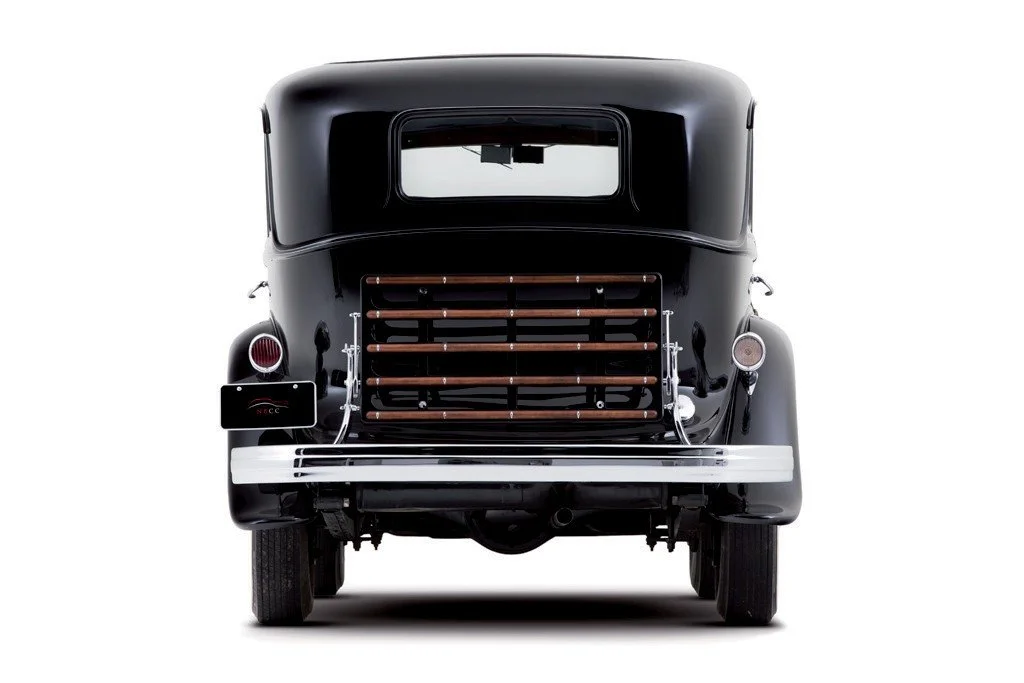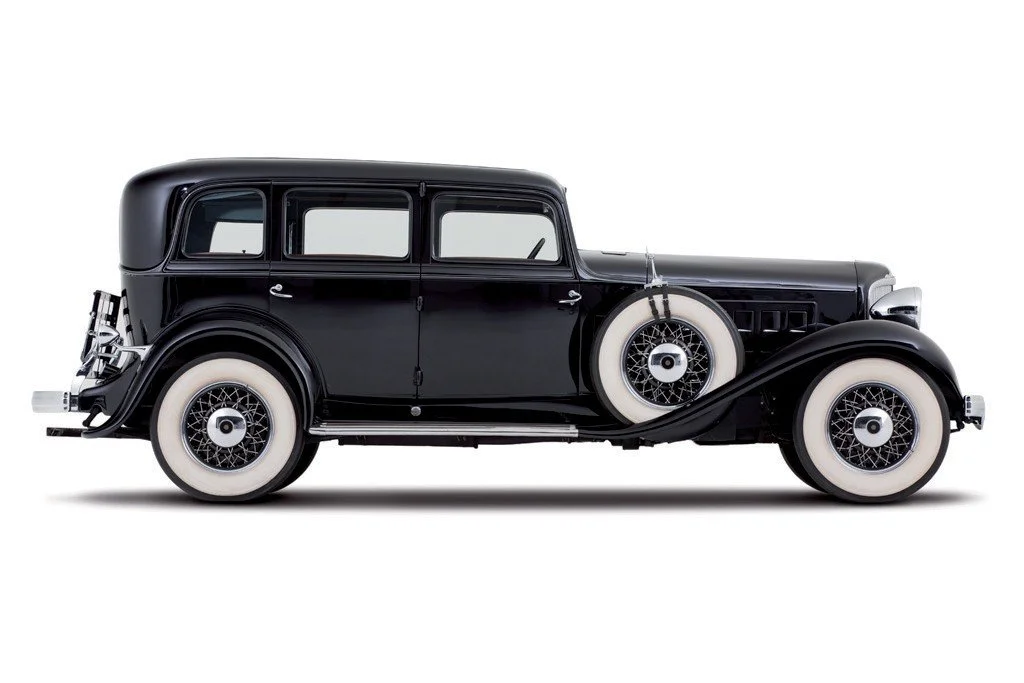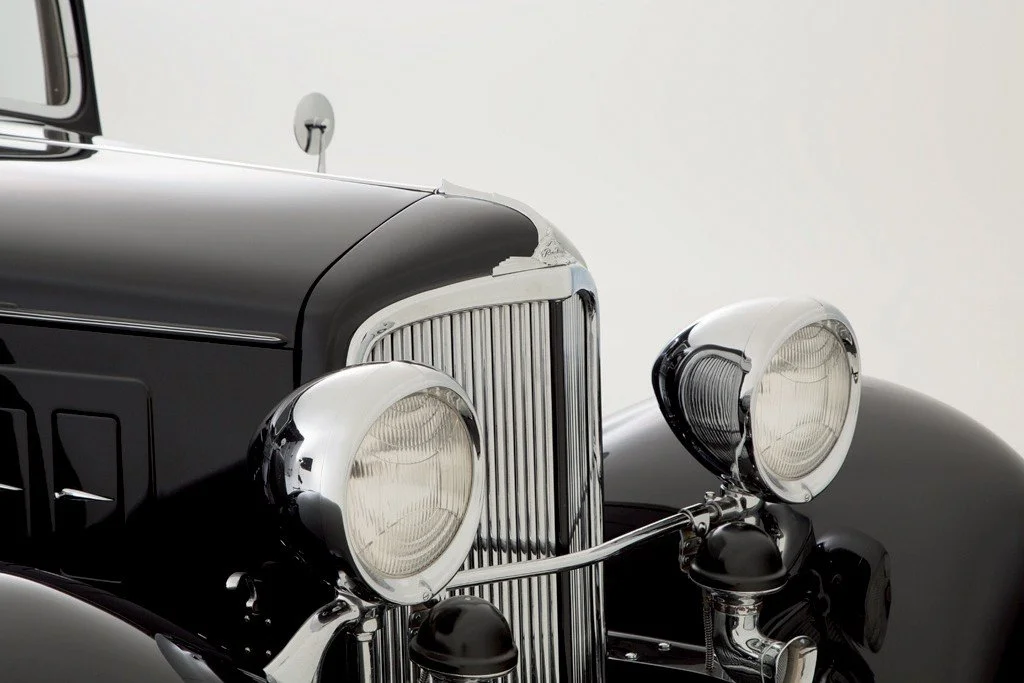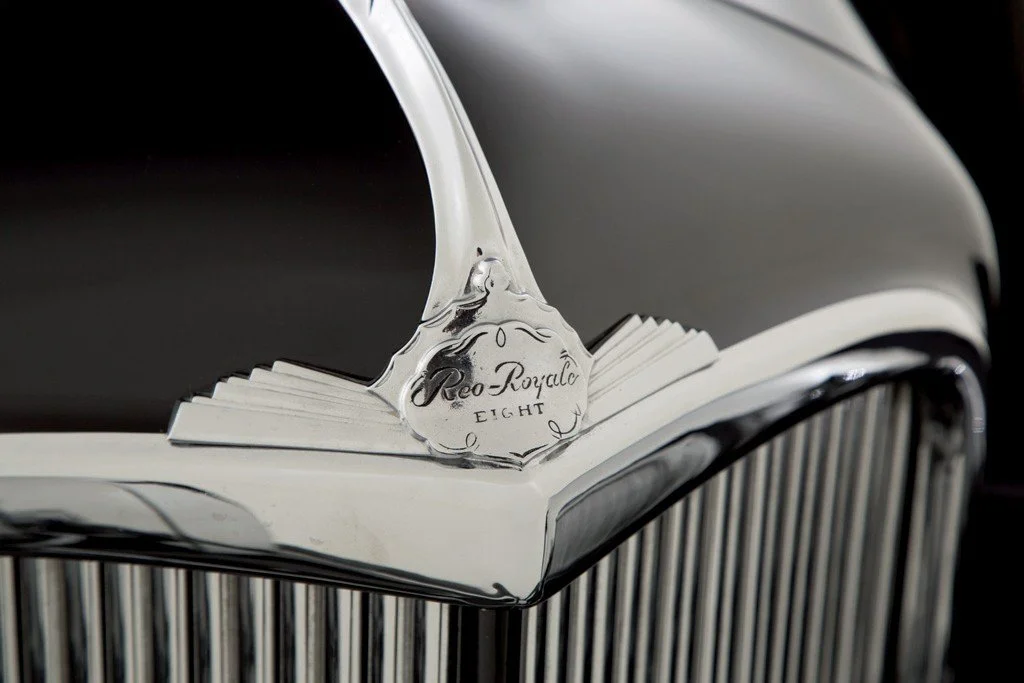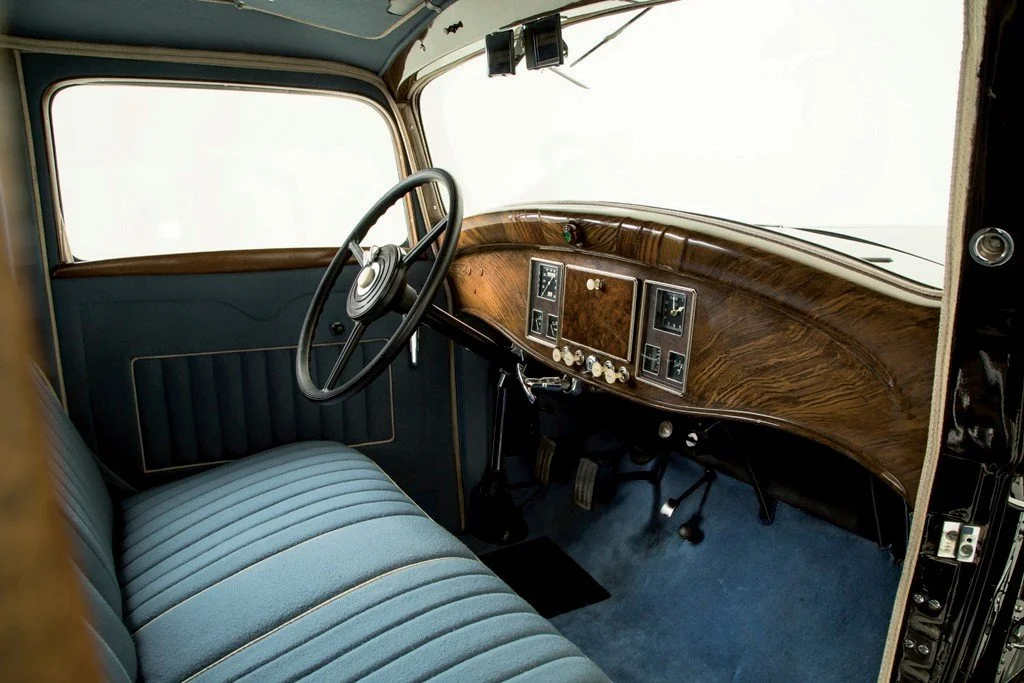-
Any REO Royale is a rare car, but a 1933 or 1934 car is nearly non-existent. This example was purchased at auction in August 2015. The previous owner did a comprehensive restoration of the entire car including the ultra-rare self-shifter transmission. The transmissions were so delicate and problematic and have proved hard to restore that many owners chose over the years to replace them with manual transmissions. It is possible this is the only example surviving with this transmission.
The car is finished in black with a blue mohair interior and remains a stately example of a rare and underappreciated luxury car.
-
Company
REO Motor Car Company
Make
REO
Model
Royale
Body Style
Sedan, 4-door, 5-pass.
Body Manufacture
Murray Body Company
Model year
1933
Wheelbase
135 inches
Length
216 inches
Engine
inline-8, L-head, 356 cid
Horsepower
125 @ 3300 rpm
Transmission
4-speed Semi-Automatic, Self-Shifting
Original Base Price
$2,445
Brand Production
3,623
This Car Production
3 estimated -
In January 1904, Ransom Eli Olds left Olds Motor Works, the company he founded, because of differences with the controlling investors over the direction of new products. Despite rumors of Olds retirement from the industry, by the end of that year he was back in business with the REO Motor Car Company, the name composed of Olds’ initials.
REO maintained a strong market position through the end of World War I but Olds’ conservative management style and slow reaction time to changing market forces started to erode the company's market position. Like many car companies, the stock market crash caught them off guard and proved more devastating than they could imagine. REO was preparing their most luxurious offering ever at the time of the crash. The Royale debuted in 1931 just as the Great Depression was killing off the car market. By the time the car appeared, the company was losing money.
The Royale offered an in-line eight engine with 9 main bearings, one-shot lubrication and thermostatically controlled radiator louvers. New for the 1933 model year was an optional “self-shifter", an early form of automatic transmission that was mounted in-unit with the engine. This technical leap proved troublesome and delicate and found few takers.
The handsome styling of the bodies was credited to Amos Northrup of the Murray body company. Over the lifespan of the model the car came in three wheelbase lengths, 131”, 135” and a staggering 152” rivaling such luxury cars as Duesenberg.
The Royale offered the luxury and styling that deserved a place alongside the best from Cadillac, Packard and Pierce Arrow. But, REO was hemorrhaging money and the Depression had cut the market for such luxury offerings drastically. REO could not compete in the Luxury or even near luxury space. The Royale ceased production after the 1934 model year and REO exited the automobile business in favor of trucks in 1937.



